![SQID (Castello / Stangl / de Vega / Faravelli): SQID [2 CDs] (Mikroton Recordings) SQID (Castello / Stangl / de Vega / Faravelli): SQID [2 CDs] (Mikroton Recordings)](https://www.teuthida.com/productImages/misc4/20766.jpg)
An international quartet of electroacoustic improvisers, SQID (Angelica Castello, Mario de Vega, Attila Faravelli and Burkhard Stangl) formed in 2011, using field recordings of sound instruments and objects which they use in live performance to make remarkable audio environments.
In Stock
Quantity in Basket: None
Log In to use our Wish List
Shipping Weight: 5.00 units
EU & UK Customers:
Discogs.com can handle your VAT payments
So please order through Discogs
Sample The Album:
Angelica Castello-paetzold flute, cassettes, radios, toys, ukulele
Burkhard Stangl-guitar, devices
Mario de Vega-electronics
Attila Faravelli-electronics through modified speakers
Click an artist name above to see in-stock items for that artist.
Label: Mikroton Recordings
Catalog ID: cd 41 | 42
Squidco Product Code: 20766
Format: 2 CDs
Condition: New
Released: 2015
Country: Russia
Packaging: Cardboard Gatefold 4 Panels
Recorded on the Austrain-Hungarian border on the 24th and 25th of August, 2014 by Attila Faravelli.
"Formed in 2011 by Angélica Castelló, Mario de Vega, Attila Faravelli and Burkhard Stangl, the 1 quartet SQID focuses on live sound art and sound performances that push the bounds of the conventional formats of the concert and recording situation. In July 2012 SQID performed at the Nickelsdorf Konfrontationen festival and played a four-hour installative concert entitled "240" in the protestant church. The sound performance was so well received by the audience and critics that it triggered the production of this double CD for the Russian label Mikroton Recordings.
In August 2014 SQID accepted an artist-in-residence invitation from the Kleylehof team. The planned recordings for the Mikroton release took place in the course of the residency at the Kleylehof. The special guest of SQID (and the Kleylehof AiR programme) was the Mexican media artist Gudinni Cortina, who followed the work of the ensemble with his camera and also made a number of "sound donations".
SQID chose various sites around the Kleylehof where it played and made field recordings, particularly in neglected public and semi-public spaces and places along the Austrian-Hungarian border: the old Kleylehof cemetery, which is located close to the border next to a young wood and is still maintained, although it was abandoned in the 1950s; a quarry pond in Hegyeshalom; a forgotten, empty truck park near the motorway and the former border checkpoint; the attic of the Kleylehof farmhouse where the huge organ pipes constructed by the visual artist and musician Heimo Wallner for the Reheat festival 2014 were still on site and at SQID's disposal to be played ad libitum; and the perpetual ambient noise, the low hum of the wind turbines - not forgetting the infrasound vibrations - that filled the air around the Kleylehof.
For the field recordings SQID used exclusively portable equipment, an arsenal of instruments comprising bells, recorders, cassette players, toys, acoustic and electric guitars plus a battery-powered amplifier as well as "unstruments" such as, for instance, converted toy engines, tiny sine-wave generators, transducers, gadgets, and high-frequency electromagnetic field detectors. Found materials and various "essences", including wood, glass, metal, stones, grass, earth, water or explosives, were also used as sound sources.
SQID at the Kleylehof: the process of recording music in the field or in specific places, captured by the microphones of the Italian sound nerd and field recording specialist Attila Faravelli. Parallel soundscapes open up, synchronicities, layers, mixes, interactions between planned and accidental coincidences, combinations of actor-produced artificial noises and natural-mechanical-industrial sounds radiating from the surroundings. The murmur of the world as the foil for SQID's music, which is in a way nothing but a form of deliberately provoked musical casualness."-Mikroton
Artist Biographies
• Show Bio for Angelica Castello "Angélica Castelló Recorder player, composer, improviser, sound artist, curator, teacher. Born in Mexico City in 1972, Castelló studied music in her native town at the Conservatorio Nacional de México, at the Université de Montréal, at the Conservatorium van Amsterdam, at the Konservatorium der Stadt Wien and at the Department of Composition and Electroacoustics at the University of Music and Performing Arts Vienna. Since 1999, she has lived in Vienna, where she is a teacher. In the year 2004, she founded the concert series "Neue Musik in St. Ruprecht", and has organised hundreds of concerts and events. Even though she remains devoted to old music, new and electroacoustic music take center stage in her work. She co-founded the ensembles Low Frequency Orchestra, frufru (with Maja Osojnik), cilantro (with Billy Roisz), subshrubs (with Katharina Klement, Tamara Wilhelm and Maja Osojnik) and Chesterfield (with Burkhard Stangl) Plenum, Zimt (with Gunter Schneider, Barbara Romen and Burkhard Stangl) a.o.. She has performed in Europe and America with these ensembles and with other musicians such as, Martin Siewert, John Butcher, Dafne Vicente-Sandoval, Urkuma, Franz Hautzinger, Isabelle Duthoit, dieb13, Jerome Noetinger, Mario de Vega, Attila Faraveli, Kazu Uchihashi, Bonnie Jones, Juanjose Rivas, Steve Bates, Olga Neuwirth, Wolfgang Mitterer and others. As a composer, she writes for her own instruments (mainly the Paetzold sub great bass recorder, with and without electronics) and for ensembles (amongst them the Danubia Saxophonquartett, Reconsil Ensemble Vienna and the Haydn Piano Trio) as well as Electroacustic Works. Her music has been published by the labels Mosz, Instertellar Records, Orlando Records, einklang_records, Mandorla Label, Mikroton Recordings, Monotype Records and chmafu nocords. Numerous composers, including Hilda Paredes, Daniel de la Cuesta, Katharina Klement, Burkhard Stangl, Jorge Sánchez-Chiong, and Mario Lavista, have worked with Angélica Castelló or dedicated pieces to her. In recent years, Castelló's work has included installations that operate at the interface of music, performance and visual arts (Electroaltar, Electroaltar for J.C., Electroaltar für C.N., Margarita' Stillleben Theater). Her debut album, "Bestario", unites the multifaceted nature of Angélica Castelló's work: Recordings of her own instruments serve as the raw material for pieces in which she edits the sounds of her flutes, sometimes beyond recognition, and combines them with frequently deformed fragments of other elements - be they electronically produced or found elsewhere - to a musical entity in which multiple layers overlap. She weaves existing pieces of other composers, such as Bach, into these contemporary forms of electronic processing, thereby referencing her work as an interpreter of old music. Even though her other sources of inspiration, such as from literature or visual arts, often have specific roots, they lead Castelló to an abstract engagement with such topics as death, and dealing with traumatic encounters. Wide-ranging combinations of sounds that are constantly and sometimes simultaneously moving in different directions provide continuity as well as surprises, and when listened to repeatedly, they shed new light on the beasts from literature, the animal kingdom, and daily life that have been set to music." ^ Hide Bio for Angelica Castello • Show Bio for Burkhard Stangl "Guitarist and composer Burkhard Stangl works in the fields of improvisation, electronica and contemporary classical. Among many others he played, recorded and collaborated with musicians / groups / composers /artists like Anestis Logothetis, Franz Koglmann, Radu Malfatti, Gunter Schneider, John Butcher, Franz Hautzinger, Taku Sugimoto, Taku Unami, Olga Neuwirth, Polwechsel, Gene Coleman, Kevin Drumm, dieb13, Billy Roisz, Martin Siewert, Boris Hauf, Gustav Deutsch, Oswald Egger, Uchihashi Kazuhisa, Katharina Klement, Christof Kurzmann, Kai Fagaschinski, Anna Zaradny, Robert Piotrowicz, Patrick K.-H., Klangforum Wien, efzeg, Christian Fennesz, Barbara Romen, Steve Bates, Katharina Ernst, Juan José Rivas, Fernando Vigueras, Mario de Vega, Attila Faravelli, and, last but not least, with his partner in life and art Angélica Castelló." ^ Hide Bio for Burkhard Stangl • Show Bio for Mario de Vega "Mario de Vega, who performs on Home Built Electronics, was born in 1979 in Mexico City, Mexico. Mario has developed and built a subtle and unique instrumental arsenal, including cracked electronics, crackle boxes, mixing desks and re constructed microphones. In doing so, he has created a language that speaks loudly to the faults and fractures of our technology obsessed culture." ^ Hide Bio for Mario de Vega
11/20/2024
Have a better biography or biography source? Please Contact Us so that we can update this biography.
11/20/2024
Have a better biography or biography source? Please Contact Us so that we can update this biography.
11/20/2024
Have a better biography or biography source? Please Contact Us so that we can update this biography.
Track Listing:
CD 1
1. IMG_7697 3:18
2. IMG_7750 1:22
3. IMG_7787 1:31
4. IMG_7760 6:44
5. IMG_7796 2:54
6. IMG_7899 6:01
7. IMG_7909 3:52
8. IMG_7757 3:59
9. IMG_7919 5:17
10. IMG_8035 9:31
11. IMG_8127 8:17
CD 2
1. IMG_7728 31:04
2. IMG_7923 17:37
Improvised Music
Electro-Acoustic
Electro-Acoustic Improv
Field Recordings
Quartet Recordings
Staff Picks & Recommended Items
Search for other titles on the label:
Mikroton Recordings.


![SQID (Castello / Stangl / de Vega / Faravelli): SQID [2 CDs] (Mikroton Recordings) SQID (Castello / Stangl / de Vega / Faravelli): SQID [2 CDs] (Mikroton Recordings)](https://www.teuthida.com/productImages/full/20766.Full.jpg)
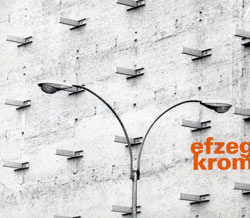


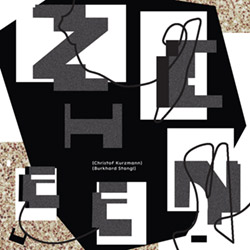








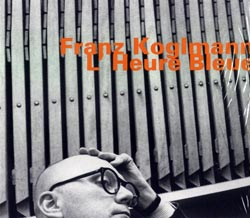
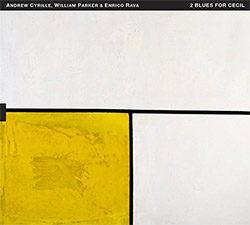
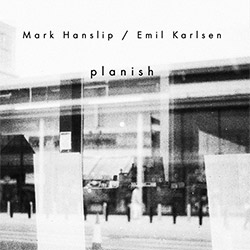
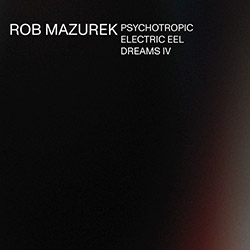
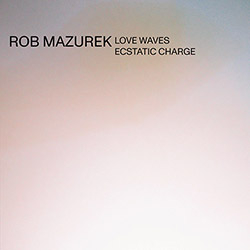
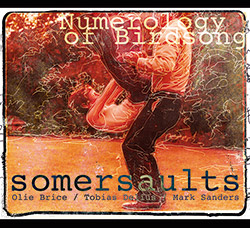
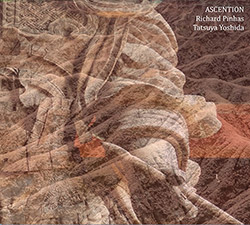



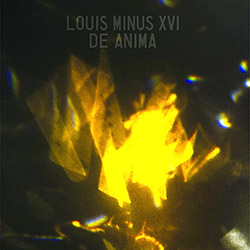




![Guy, Barry / Ken Vandermark: Occasional Poems [2 CDs]](https://www.teuthida.com/productImages/misc4/34849.jpg)
![Novoa / Carter / Mela Trio: Vol.1 [VINYL]](https://www.teuthida.com/productImages/misc4/35236.jpg)


![Elephant9 : Mythical River [VINYL]](https://www.teuthida.com/productImages/misc4/34624.jpg)
![Evans, Peter (Evans / Eldh / Black): Extra [VINYL]](https://www.teuthida.com/productImages/misc4/35279.jpg)

![McPhee, Joe: Straight Up, Without Wings [BOOK]](https://www.teuthida.com/productImages/misc4/35454.jpg)
![Jeck, Philip: rpm [2 CDs]](https://www.teuthida.com/productImages/misc4/35455.jpg)













![Barker / Parker / Irabagon: Bakunawa [VINYL]](https://www.teuthida.com/productImages/misc4/35533.jpg)
![Blaser, Samuel / Marc Ducret / Peter Bruun: Dark Was The Night, Cold Was The Ground [VINYL 10-inch]](https://www.teuthida.com/productImages/misc4/35492.jpg)








![Warren, Kenny (Warren / Hoffman / Ellman): Sweet World [VINYL]](https://www.teuthida.com/productImages/misc4/35451.jpg)




![Blake, Ran / Dave Knife Fabris: Live Amsterdam 2006, First Visit [CD + POSTCARDS]](https://www.teuthida.com/productImages/misc4/35275.jpg)













![DNS: Taking Big Bites Of The Khandas Three Cafes Deep [2 CDs]](https://www.teuthida.com/productImages/misc4/35334.jpg)




![Cleaver, Gerald: The Process [VINYL]](https://www.teuthida.com/productImages/misc4/34966.jpg)



![Alva Noto: HYbr:ID II [VINYL 2 LPs]](https://www.teuthida.com/productImages/misc4/35201.jpg)

![Baron, Derek / Luke Martin: Distinct and Concealed [CASSETTE + DOWNLOAD]](https://www.teuthida.com/productImages/misc4/35079.jpg)

![Lyle, Erica Dawn : Colonial Motels [CASSETTE + DOWNLOAD]](https://www.teuthida.com/productImages/misc4/35080.jpg)









![Sanna, Claudio: Compositori Sardi Contemporanei II [2 CDs]](https://www.teuthida.com/productImages/misc4/35317.jpg)







![Zurria, Manuel: Fame di Vento [3 CDs]](https://www.teuthida.com/productImages/misc4/35167.jpg)

![Granberg, Magnus / Nattens Inbrott / Skogen: Holde Traume, Kehret Wieder! [2 CDs]](https://www.teuthida.com/productImages/misc4/35038.jpg)
![Frey, Jurg: Outermost Melodie [2 CDs]](https://www.teuthida.com/productImages/misc4/35039.jpg)

![Pavone, Jessica: Reverse Bloom [VINYL]](https://www.teuthida.com/productImages/misc4/34895.jpg)




![Modney (Modney / Wooley / Gentile / Roberts / Pluta / Symthe / ...): Ascending Primes [2 CDs]](https://www.teuthida.com/productImages/misc4/34852.jpg)









![Elephant9 with Terje Rypdal: Catching Fire [VINYL 2 LPs]](https://www.teuthida.com/productImages/misc4/35355.jpg)
![Deerlady (Obomsawin, Mali / Magdalena Abrego): Greatest Hits [VINYL]](https://www.teuthida.com/productImages/misc4/34876.jpg)




![Haino, Keiji: Black Blues [2 CDs]](https://www.teuthida.com/productImages/misc4/35109.jpg)



![Surplus 1980: Illusion of Consistency [CD]](https://www.teuthida.com/productImages/misc4/35069.jpg)
![Staiano, Moe: Away Towards the Light [VINYL + DOWNLOAD]](https://www.teuthida.com/productImages/misc4/35037.jpg)



![Caveira (Gomes / Sousa / Abras / Ferrandini): Ficar Vivo [VINYL]](https://www.teuthida.com/productImages/misc4/34643.jpg)
![Gregg, J. J. / David Van Auken: Lunar Prairie [CD w/ DOWNLOAD]](https://www.teuthida.com/productImages/misc4/34611.jpg)

![Coultrain: Mundus [VINYL]](https://www.teuthida.com/productImages/misc4/32439.jpg)
![Mattin: Songbook #6 [VINYL]](https://www.teuthida.com/productImages/misc4/27317.jpg)
![Punkappella: Wake Up [7-inch VINYL]](https://www.teuthida.com/productImages/misc4/17519.jpg)
![Residents, The: WARNING: UNiNC.: Live And Experimental Recordings 1971-1972 [VINYL 2 LPs]](https://www.teuthida.com/productImages/misc4/31521.jpg)
![Coultrain: Phantasmagoria [VINYL]](https://www.teuthida.com/productImages/misc4/30142.jpg)
![Lennon, Sean Ono: Asterisms [VINYL]](https://www.teuthida.com/productImages/misc4/34517.jpg)

![Coley, Byron: Dating Tips for Touring Bands [VINYL]](https://www.teuthida.com/productImages/misc4/17906.jpg)

![Lost Kisses: My Life is Sad & Funny [DVD]](https://www.teuthida.com/productImages/misc4/lostKissesDVD.jpg)